Entryway Appeal Can Hinge on a Pivot Door
http://decor-ideas.org 11/10/2013 08:40 Decor Ideas
The pivot door is a dramatic alternative to common exterior doors that swing or slide open. They can be larger and made out of metal, stone and other materials heavier than typical swing doors, because they are held up from below in lieu of being hinged at the side. A 48-inch swing door, for example, would be very heavy, and the hardware would have to be quite large to support it. Therefore, the chances the door would sag and malfunction are greater than with a pivot door.
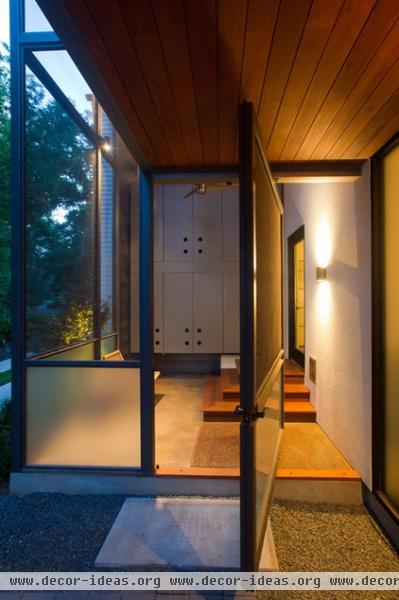
Most pivot doors are custom designs and larger than standard doors; they can easily cost $10,000 and up. But they have tremendous architectural appeal.They are large, simple rectangles that are more like pieces of the surrounding wall than a separate architectural element. In this way a pivot door is really at home in a modernist design.
Here all of that glass and the metal frame become, magically, a way into and out of a home.
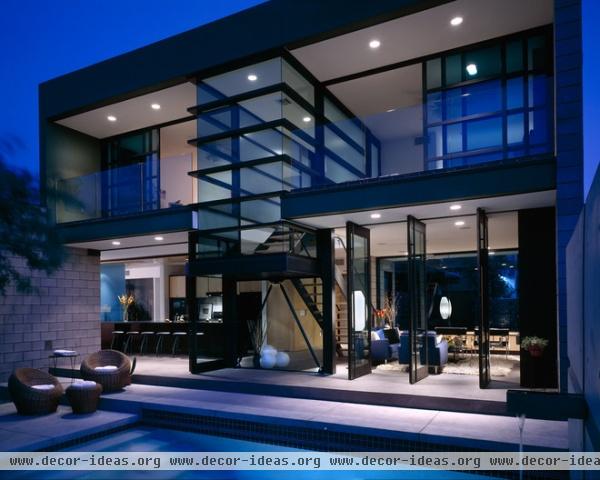
Pivot doors have an ability to direct space, unlike many other types of doors. This series of them creates a stunning vertical design element that both defines and blurs the line between inside and out.
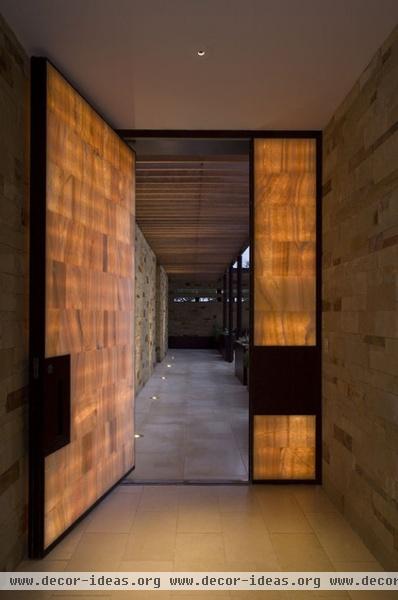
How about a stone door that's internally lit so it glows? I wish I'd been there when the architect was explaining this design vision to the builder. Yet here it is!
Built of a steel frame with onyx panels, the door — designed by Austin, Texas, architect Dick Clark and built by Gary McFarland of Pivoting Doors — has lights sandwiched between the onyx to give it a glow. The need to change lights and replace broken onyx panels was factored in to the design and engineering of the door.
And that's an important point. As with any door, making sure pieces can be replaced or repaired is essential. After all, what would be the point of having the door look good only when it's brand new?
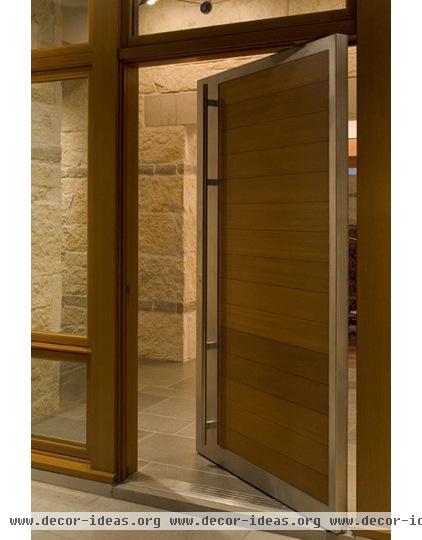
Using compression seals, a technology that was used on World War II fighting ships, these doors perform every bit as well as a standard swing door, keeping out wind, water and bugs.
In some respects a pivot door uses the same components as a swing door. A threshold, jambs and head are all necessary to create a seal between outside and inside. How a pivot door closes and the tightness of the seal are important to the overall performance of the door. You want a seal that keeps out the elements while being easy to operate.
Beware a door that shows daylight around it when closed. And beware a door that is so tightly sealed that it takes two hands and a strong tug to get it open.
All exterior doors should have some protection from the weather, so placing the door in a protected area is the smart thing to do.
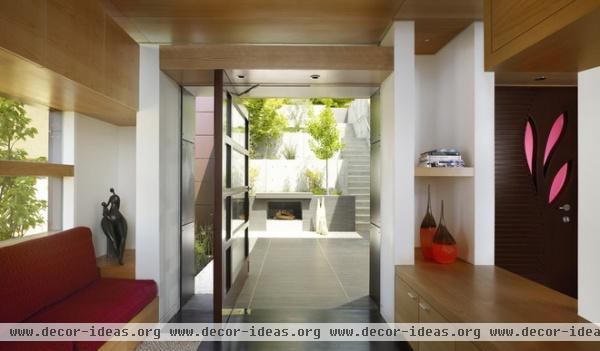
Hardware is a crucial element in the design of a pivot door. The type of pivot used (offset, center hung, pocket) is a function of the architecture of the home. For example, an offset hung door can be opened 180 degrees, whereas this wouldn't be possible with a center-hung door.
The other hardware element is the closer, which is the bit of hardware that keeps the door from slamming shut after it's been opened. While many closers are fully visible (think of the piston-type closer on a storm door), they are usually concealed so there isn't any ugly box on the door. Because they are concealed, it's important to coordinate the installation of the closer with the surrounding structure. If the closer is located in the floor slab, for example, a boxout has to be precisely placed where the closer will be so that concrete doesn't have to be chipped out later.
Even with this extra bit of coordination, a pivot door is really the right choice to achieve the big opening that is so much a part of contemporary architectural design.
Tell us: Would you include a pivot door in your dream house?
Related Articles Recommended












